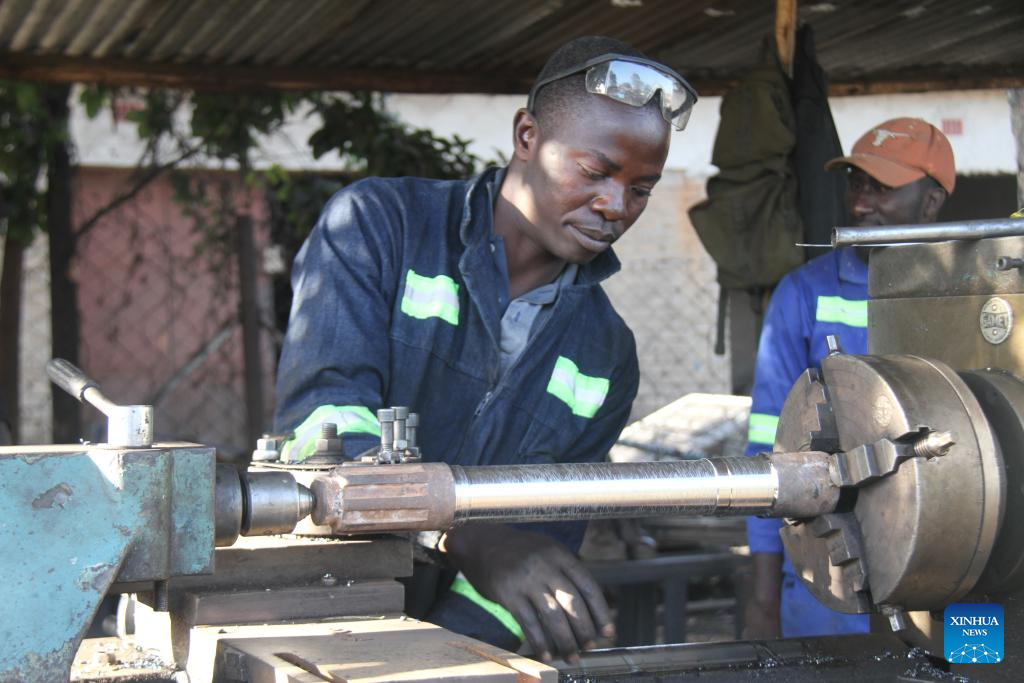Feature: China-funded power expansion project brings relief to Zimbabweans

An engineer works at his business stand in Mbare, south of Harare, Zimbabwe, on Aug. 8, 2023. (Xinhua/Tafara Mugwara)
HARARE, Aug. 10 (Xinhua) -- Going to bed and waking up in darkness had become the norm for Zimbabweans as the country endured rolling blackouts due to depressed power generation.
But now, according to Zimbabwe's President Emmerson Mnangagwa, the country is now energy sufficient following the completion of a China-funded expansion of the Hwange Power Station, the country's largest thermal power plant.
"I am told now that we have adequate power for the current economic activities in the country, there is no load-shedding for now, but we still have other projects which we are designing to increase the production or generation of power in Zimbabwe," said Mnangagwa soon after commissioning the expansion project of the Hwange Power Station last Thursday.
Chinese firm Sinohydro Corporation undertook the expansion of units 7 and 8 of the coal-fired power station, which added two generators with a combined capacity of 600 megawatts.
Unit 7 is already feeding into the grid after the successful completion of tests in June. Unit 8 is undergoing tests and is expected to be available commercially this month or in September.
For almost two months, Zimbabweans have been enjoying a near-constant power supply.
Business owners said the rolling power cuts were weighing on economic activity.
"We sell perishable goods, so basically we need a constant supply of electricity. When you look at the situation since the improvement of electricity, we can see that business is now operating in a better manner because without electricity we had to resort to using generators," Tapiwa Tembo, a butchery manager in Harare, the capital of Zimbabwe, told Xinhua.
His sentiments were echoed by David Jimu, an engineer who runs a small business in Mbare, south of downtown Harare.
"When we were experiencing power cuts, we had a challenge that the generator could not power large machines, and using generators meant that fuel expenses were eating into our profits," he said.
Virginia Tediya, a Harare resident, said with the costs of purchasing liquefied petroleum gas (LPG) shooting off the roof, improved power generation has been a huge relief. "It was a hustle because power would be restored when we were sleeping, and sometimes we would sleep with an empty stomach because you will not have money to buy firewood or (LPG) gas," she said.
For years, Zimbabwe's sources of energy have been failing to meet demand. The country's hydropower station, the Kariba South Station with a capacity of up to 1,050 megawatts, has at times only managed to supply less than half of its installed capacity owing to successive droughts which reduced water levels.
The Hwange Power Plant had also been plagued by frequent outages due to mechanical issues.
Before the expansion, Hwange Power Station had an installed capacity of 920 megawatts, and the addition of two generators brings the installed capacity to over 1,500 megawatts.
The completion of the Hwange Power Plant becomes the second major national project successfully completed by Sinohydro in Zimbabwe following the Kariba South Expansion Project in 2018, which added 300 megawatts.
While the energy generation capacity increased, Zimbabwe is still seeking to increase generation as the country has over the past years witnessed more investment in the mining sector, the largest power consumer.

